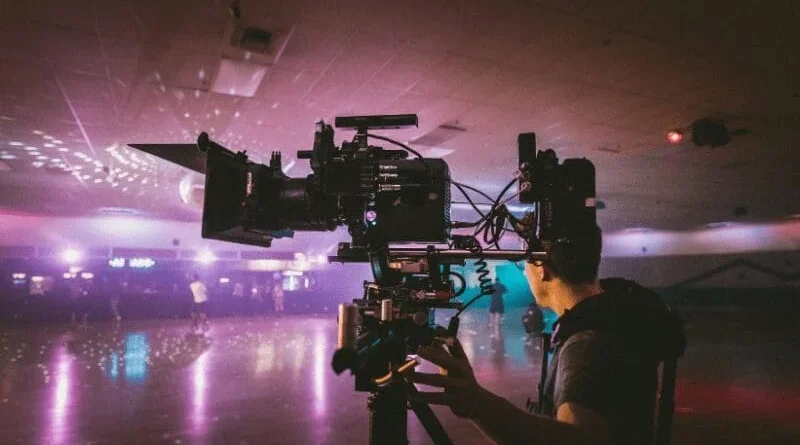How Long Does it Take to Make a Movie Come Alive?
Lights, camera, animation! Step into the captivating world where imagination takes flight and pixels dance harmoniously to bring stories to life. Have you ever wondered about the sheer wizardry behind your favorite animated movies? The hours of dedication poured into each frame, the meticulous attention to detail that breathes enchantment into every character’s movement? Join us on a mesmerizing journey as we unveil the magic behind animation – delving deep into how Long of a Video Can You Post On Instagram it truly takes for these extraordinary masterpieces to come alive on screen. Get ready to be spellbound by the secrets of this mystical art form!
Introduction to Animation
Animation is a form of storytelling that has been captivating audiences for over a century. From the early days of hand-drawn cartoons to the advanced computer-generated imagery (CGI) used in modern films, animation has evolved into a complex and mesmerizing art form.
At its core, animation is the process of creating an illusion of movement by rapidly displaying a sequence of static images, known as frames. Each frame contains slight variations from the previous one, giving the impression of fluid motion when played continuously.
Read More: Hard reset
The History of Animation:
The history of animation can be traced back to 1833 when British scientist William George Horner invented the zoetrope – a device that displayed moving images through slits in a rotating drum. This invention laid the foundation for future developments in animation technology.
In 1906, French filmmaker Emile Cohl created “Fantasmagorie,” considered to be the first animated film using hand-drawn techniques. The success of this film led to other artists experimenting with animation, including American animator Winsor McCay who created “Gertie the Dinosaur” in 1914 – one of the earliest examples of character animation.
The Process of Making an Animated Movie
The process of making an animated movie is a complex and time-consuming one. It involves a team of talented artists, animators, writers, directors, and producers working together to bring a story to life on the big screen. In this section, we will delve deeper into the different stages involved in creating an animated movie.
- Concept Development: Every movie starts with an idea or concept. This could be a story from a book, a personal experience, or even just an abstract idea. The first step in making an animated movie is developing this concept into a cohesive story that can be translated onto the screen. This stage usually involves brainstorming sessions with writers and directors to come up with characters, plot points, and themes.
- Scriptwriting: Once the concept has been developed, it’s time to write the script. This is where the story really comes alive through dialogue and action descriptions. The script writers work closely with the directors to ensure that their vision for the film is accurately captured in the writing.
- Storyboarding: Storyboarding is an essential step in creating an animated movie as it helps visualize how each scene will look like before any animation takes place. It involves drawing rough sketches of key scenes along with notes on camera angles, character movements, and dialogue placement.
- Voice Recording: Before any animation can take place, voice actors are brought in to record their lines for each character.
Storyboarding and Concept Art
Storyboarding and concept art are crucial steps in the animation process that lay the foundation for bringing a movie to life. These two elements provide a visual representation of the story, characters, and settings that will eventually be realized on screen.
Storyboarding is essentially a comic book version of the movie, with each panel depicting a key moment or scene. It serves as a blueprint for the entire film, allowing animators to plan out the sequence of events and camera angles before any actual animation takes place. This helps streamline the production process by providing a clear roadmap for every shot and scene.
The process of creating storyboards usually begins with the director breaking down the script into specific shots and scenes. From there, storyboard artists use their skills in drawing, composition, and storytelling to bring these ideas to life. They work closely with the director to ensure that their boards accurately capture their vision for each scene.
Apart from outlining important plot points and character actions, storyboards also serve as an important tool for identifying potential issues or inconsistencies in the narrative early on. This allows filmmakers to make necessary changes before investing time and resources in animating scenes that may not work well within the larger context of the film.
Concept art is another important element in pre-production that helps give shape and form to various aspects of an animated movie such as characters, environments, props, and special effects. It is created by skilled artists who take inspiration from written descriptions or rough sketches provided by writers or directors.
Character Design and Animation
Character design and animation are crucial elements in bringing a movie to life. They are responsible for creating the characters that audiences connect with and making them move, emote, and interact within the story. In this section, we will delve into the world of character design and animation, exploring the processes involved and the impact they have on a film.
Character Design:
The process of character design begins with conceptualization – coming up with ideas for what the characters should look like. This is often done through sketches or digital illustrations, where artists experiment with different shapes, colors, and features to find the perfect look for each character.
Once the initial designs are approved by the director or production team, they move on to more detailed renderings. This involves creating front, side, and back views of each character to ensure consistency in their appearance throughout the film. These designs also include details such as facial expressions, clothing styles, and any other distinguishing features that make each character unique.
After finalizing these designs, 3D models of each character are created using specialized software. These models can be manipulated from all angles to see how Long Does It Take to Make an Animated Movie they would look when animated. Depending on the complexity of a character’s design (i.e., fur or intricate patterns), this process can take anywhere from days to weeks to complete.
Backgrounds and World Building
Backgrounds and world building are crucial elements in the creation of an animated movie. They set the stage for the story to unfold and help bring the audience into a new, fantastical world. In this section, we will explore the importance of backgrounds and world building in the animation process.
Firstly, let’s define what backgrounds and world building mean in animation. Backgrounds refer to all of the static elements that make up a scene, such as landscapes, buildings, props, and other objects. These elements create the setting for the characters to interact with and bring life to the story. On the other hand, world building involves creating an entire fictional universe that is unique to the film’s story. This includes everything from developing cultures and societies to designing creatures and environments.
One of the main reasons why backgrounds and world building are essential in animation is that they add depth and dimension to a film. Animated movies have a distinct advantage over live-action films because they can create any kind of world without being limited by real-world constraints. This allows animators to unleash their creativity and imagination while crafting visually stunning settings that captivate audiences.
Sound Design and Music
Sound design and music play a crucial role in bringing an animated movie to life. They are often overlooked elements, but they have the power to transport the audience into the world of the film and evoke emotions that enhance their viewing experience.
The process of creating sound design and music for an animated film can be lengthy and complex, but it is essential in immersing viewers into the story. Let’s take a closer look at how these two elements are crafted to perfection.
Sound Design:
Sound design involves creating or selecting all of the sound effects that will be heard in the movie. It is not just about adding dialogue and background noise; it also includes sounds that are specific to characters, objects, and environments. Every single sound needs to be carefully thought out and chosen to enhance the storytelling.
The first step in this process is usually recording or choosing existing sounds from libraries. These can range from everyday noises like footsteps or door creaks to more unique ones like alien creature growls or magical spells. Once all necessary sounds have been collected, they need to be edited and mixed together with precision.
Post-Production and Editing
Post-production and editing are crucial stages in the process of bringing an animated movie to life. It is during this phase that all the individual elements created during pre-production and production are combined and refined to create a polished final product.
In animation, post-production refers to all the work that takes place after the actual animation has been completed. This includes tasks such as sound design, visual effects, color correction, and music composition. These elements play a significant role in enhancing the overall quality of an animated film by adding depth, emotion, and atmosphere to the story.
One of the first steps in post-production is sound design. This involves creating or sourcing appropriate sound effects for each scene in the movie. Sound designers use various techniques such as Foley recording (creating sounds using everyday objects), digital sound libraries, and even recording live sounds on location to achieve realistic and believable audio for the film.
Visual effects are also an essential part of post-production in animation. They help create scenes or objects that cannot be achieved through traditional methods of animation. For example, if a character needs to fly or breathe fire, these effects will be added during post-production using computer-generated imagery (CGI) techniques.
Timeframe of Making an Animated Movie
The process of making an animated movie is a complex and time-consuming endeavor. It requires a combination of creativity, technical skills, and meticulous attention to detail. From conceptualization to final production, creating an animated movie can take anywhere from 1-3 years or even longer.
Pre-Production Stage (6-12 months):
The first stage in making an animated movie is the pre-production stage. This is when the initial idea for the movie is developed into a full-fledged concept and script. The script goes through multiple drafts and revisions, until it is deemed ready for production.
During this stage, the creative team also works on character designs, storyboards, and concept art. These visual elements give life to the characters and help establish the look and feel of the movie.
Once these elements are finalized, voice actors are brought in to record their lines. This helps with animating the characters later on as they will be able to match their movements with their dialogue.
Production Stage (9-15 months):
The production stage is where all the hard work really begins. This can be considered as the bulk of making an animated movie as it involves actual animation work.
Firstly, background artists create detailed backgrounds that will serve as a setting for each scene in the film. These backgrounds are either hand-drawn or created digitally using software such as Adobe Photoshop or Autodesk Maya.
Average Timeline for a 90-minute Film
The average timeline for a 90-minute film is highly dependent on the type of animation being used. Traditional hand-drawn animation typically takes the longest, with an average production time of 3-4 years. This involves creating each frame individually on paper and then transferring them onto cells to be painted and photographed.
In comparison, computer-generated animation (CGI) has a much shorter production time, averaging around 2-3 years. This is due to the use of advanced software and technology that speeds up the animation process.
However, even within CGI animation, there are variations in production timelines depending on factors such as complexity, style, and budget. For example, a simple style like “The Incredibles” may take less time compared to a more complex and stylized film like “Coco.”
Pre-production is an essential aspect of the overall timeline for an animated film. This stage involves developing the concept, storyboarding, character design, voice recording sessions, and creating animatics (animated storyboards). Pre-production can take anywhere from 6 months to a year or more.
Once pre-production is complete, the actual animation process begins. Each shot is carefully crafted by teams of animators who bring life to characters through movement and expression. The length of this stage varies greatly depending on several factors such as the number of characters in a scene, action sequences involved and level of detail required in each frame.
Factors That Affect Production Time
Production time is a crucial aspect of any animated movie, as it directly affects the overall quality and success of the final product. It is the duration between the conceptualization of an idea to its completion on the big screen. However, there are various factors that can influence this timeline, and understanding them is essential for both filmmakers and audiences.
Here are some key factors that can affect production time in animation:
- Story Development:
The first stage of creating an animated film is developing a compelling story and script. This process involves numerous steps such as brainstorming ideas, creating characters, crafting plotlines, and refining dialogue. The complexity and scope of the story can significantly impact production time as it sets the foundation for all other aspects of the movie.
- Pre-Production:
After completing the script, animators move onto pre-production where they create storyboards, concept art, character designs, and develop animatics (animated version of storyboard). This stage requires meticulous planning and attention to detail as it helps establish the visual style and overall look of the film. Depending on its scale, pre-production can take anywhere from a few months to a couple of years.
- Animation Process:
The most time-consuming aspect of making an animated movie is undoubtedly its animation process itself. Animators use specialized software to bring static images to life by creating movement frame-by-frame or using motion capture technology. The level of detail required in each scene or shot can significantly impact production time.
Behind the Scenes: Interviews with Animators
One of the most fascinating aspects of animation is the creative process behind it. It takes a team of highly skilled and talented individuals to bring a movie to life through animation. To gain insight into this intricate process, we interviewed several animators who have worked on popular animated films.
- Can you tell us about your background in animation?
Our first animator, Sarah, has been working in the animation industry for over 10 years. She graduated from a top animation school and has since worked on various projects ranging from TV commercials to feature films.
- What inspired you to become an animator?
Sarah shared that she has always been passionate about art and storytelling since she was a child. She fell in love with animation after watching classic Disney films and was determined to make it her career.
- What is your role as an animator?
According to Sarah, an animator’s main responsibility is to bring characters and scenes to life by creating movement through drawings or computer-generated images. They work closely with other departments such as character design, storyboarding, and audio to ensure consistency in the overall look and feel of the film.
- How long does it take for you to complete one scene?
The time frame varies depending on the complexity of the scene, but Sarah mentioned that it usually takes around two weeks for her team to complete one minute of high-quality animation.
The Evolution of Animation Technology
The world of animation has come a long way since its humble beginnings. From simple hand-drawn cartoons to computer-generated masterpieces, the evolution of animation technology has completely transformed the way we experience and appreciate animated movies.
The earliest form of animation dates back to the 19th century with the invention of devices such as the zoetrope and praxinoscope. These machines used a series of drawings or photographs placed on a spinning disk to create the illusion of movement when viewed through slits in the device. While these were groundbreaking inventions at the time, they were limited in their capabilities and required manual labor for each frame.




